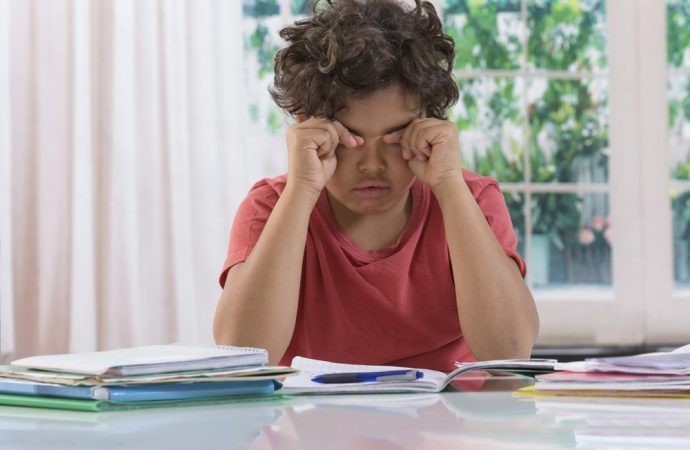Introduction: In the intricate tapestry of pediatric health, one often-overlooked thread is the well-being of a child’s eyes. Join me, Dr. Emily Chew, on an insightful journey into the realm of pediatric eye care. In this comprehensive eye comfort guide, we will delve into the causes and symptoms of dry eyes in children. Recognizing and
Introduction:
In the intricate tapestry of pediatric health, one often-overlooked thread is the well-being of a child’s eyes. Join me, Dr. Emily Chew, on an insightful journey into the realm of pediatric eye care. In this comprehensive eye comfort guide, we will delve into the causes and symptoms of dry eyes in children. Recognizing and addressing these concerns is paramount for safeguarding the visual well-being and comfort of our little ones.
The Sensitive World of Pediatric Eyes
Children’s eyes are a marvel of delicacy and complexity. Their developing visual systems require careful attention and nurturing. In the early stages of life, when communication is still forming, understanding signs of eye discomfort becomes even more critical. As parents and caretakers, it is our responsibility to navigate this sensitive world with awareness and care.
Dry Eyes in Children: Unraveling the Causes
Dr. Emily Chew opens the discussion by exploring the multifaceted causes of dry eyes in children. From environmental influences to digital screen time, various factors can contribute to the discomfort experienced by young eyes. Understanding these causes lays the foundation for proactive and targeted eye care.
Signs and Symptoms: How to Identify Eye Discomfort in Your Child
Recognizing signs and symptoms is the linchpin of pediatric eye care. Dr. Chew provides a detailed examination of the subtle cues that may indicate dry eyes in children. From redness and excessive tearing to sensitivity to light and blurred vision, parents gain practical insights to keenly observe and recognize potential eye discomfort in their little ones.
The Impact of Digital Devices: Navigating Screen Time for Healthy Eyes
In an era dominated by digital devices, the impact of screen time on children’s eyes cannot be overstated. Dr. Chew discusses the potential repercussions of prolonged digital device use on children’s eyes and offers strategies for maintaining a healthy balance. Balancing the benefits of technology with the need for visual well-being becomes a crucial aspect of contemporary parenting.
Environmental Factors: Understanding and Mitigating Influences
Beyond screens, environmental factors play a significant role in pediatric eye health. Dr. Chew explores how air quality, climate, and indoor environments can contribute to dry eyes in children. Actionable tips are provided to parents, empowering them to mitigate these influences and create an eye-friendly environment for their children.
Practical Tips for Parents: Promoting Eye Comfort in Everyday Life
Armed with a wealth of knowledge, Dr. Emily Chew shares practical tips for parents to seamlessly integrate into their daily routines. From encouraging outdoor activities to ensuring proper hydration, these tips are designed to promote eye comfort and overall well-being in children. Simple yet effective, these practices can become integral aspects of a child’s daily life.

Image by: https://www.eyelovenwa.com/2023/03/16/how-to-manage-the-progression-of-dry-eyes-in-kids/
When to Consult a Professional: Recognizing the Need for Pediatric Eye Care
Knowing when to seek professional help is a crucial aspect of parenting. Dr. Chew outlines red flags and signs that indicate it’s time to consult an eye care specialist for a comprehensive evaluation of your child’s eye health. Timely intervention can prevent potential issues from escalating, ensuring optimal eye comfort and vision development.
Visual Table:
| Aspect | Signs and Symptoms of Dry Eyes in Children |
|---|---|
| Redness and Irritation | Frequent rubbing of the eyes and visible discomfort |
| Excessive Tearing | Paradoxically, excessive tearing can indicate dry eyes |
| Sensitivity to Light | Squinting or discomfort in bright light |
| Blurred Vision | Difficulty focusing or experiencing blurred vision |
| Complaints of Eye Fatigue | Expressing tiredness or discomfort in the eyes |
Comparative Table:
| Feature | Pediatric Eye Comfort Strategies | Potential Causes of Dry Eyes in Children |
|---|---|---|
| Outdoor Activities | Encouraging outdoor play for natural eye lubrication | Insufficient outdoor time and exposure to natural elements |
| Hydration | Ensuring adequate water intake for overall health | Dehydration, which can affect tear production |
| Screen Time Management | Implementing screen time limits and breaks | Prolonged digital device use and inadequate blinking |
| Air Quality | Maintaining a clean and humidified environment | Poor air quality and dry indoor air |
| Eye Care Habits | Teaching and reinforcing healthy eye care habits | Lack of awareness and education about eye care |
Conclusion:
As we conclude this eye comfort guide, the intricate world of pediatric eyes comes into sharper focus. Dr. Emily Chew’s exploration of the causes and symptoms of dry eyes in children provides parents with valuable insights into proactive eye care. Understanding the impact of digital devices, environmental factors, and practical tips for everyday life empowers parents to prioritize their children’s eye comfort.
In a world where screens and changing environments play significant roles, this guide serves as a compass, guiding parents toward practices that promote healthy eyes and, ultimately, a comfortable and visually thriving childhood. Recognizing signs that warrant professional attention ensures timely and comprehensive eye care for little ones, laying the foundation for a future of optimal vision and eye comfort.























Leave a Comment
Your email address will not be published. Required fields are marked with *